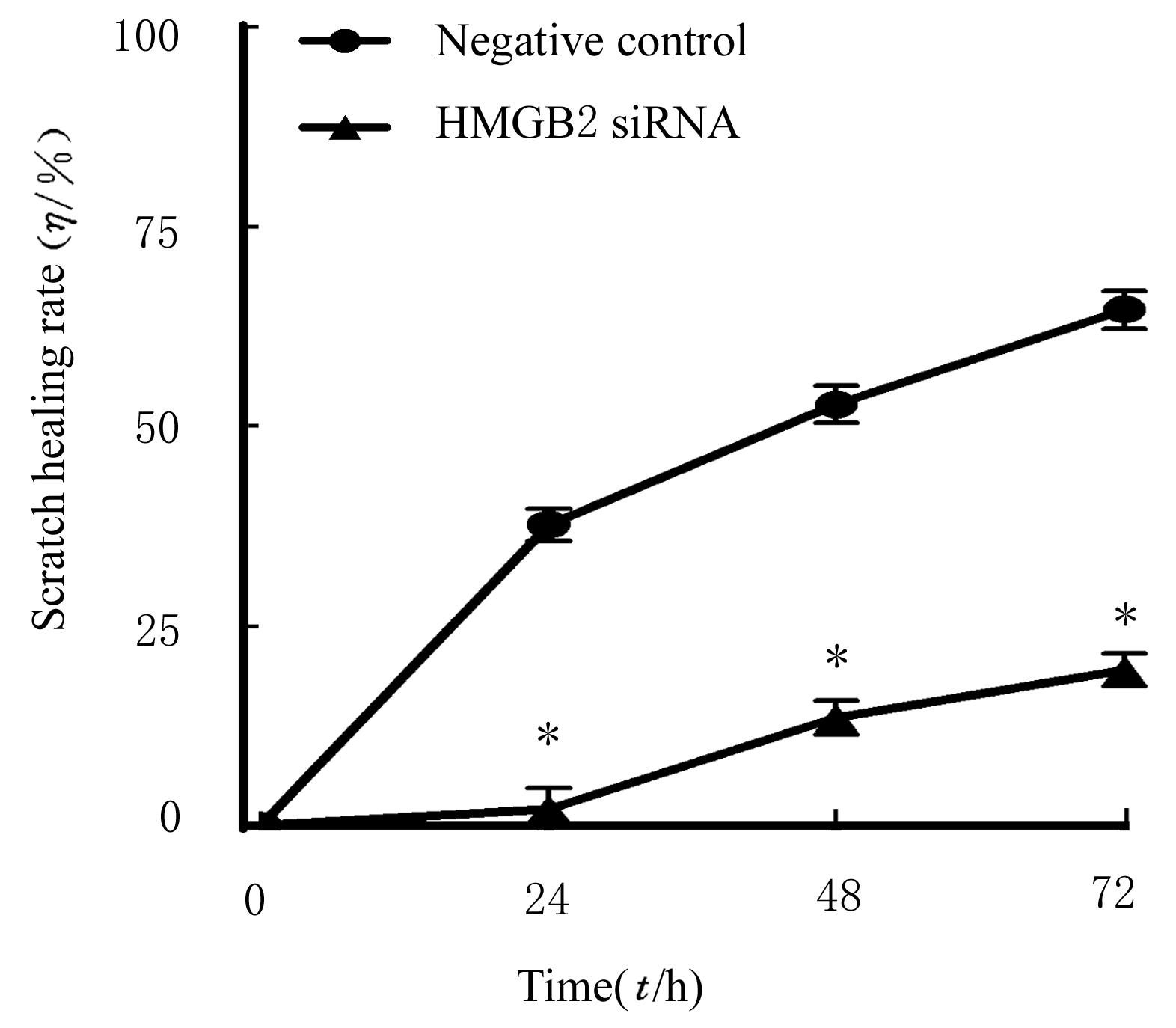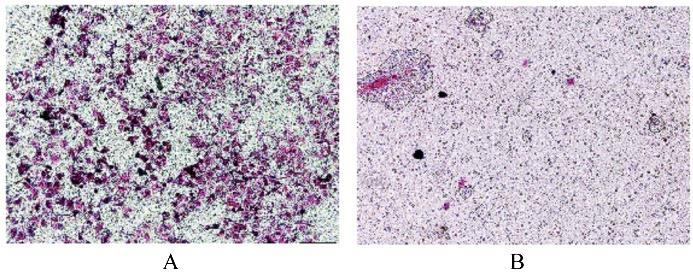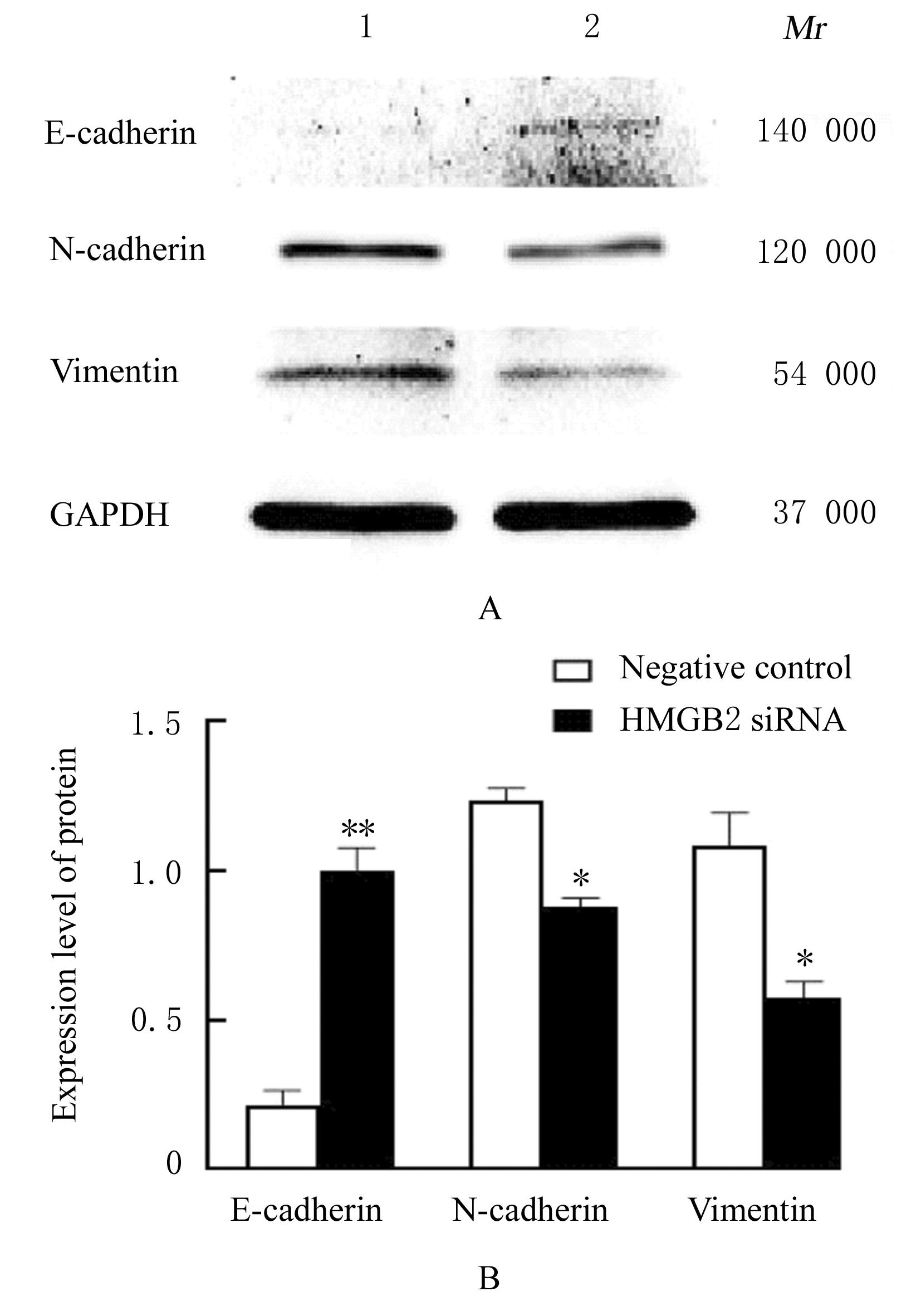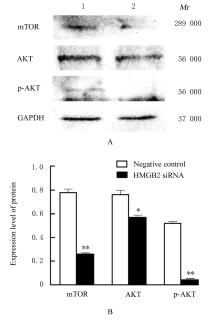| 1 |
MUKHERJEE A, VASQUEZ K M. Targeting chromosomal architectural HMGB proteins could be the next frontier in cancer therapy[J]. Cancer Res, 2020, 80(11): 2075-2082.
|
| 2 |
NIU L R, YANG W L, DUAN L L, et al. Biological functions and theranostic potential of HMGB family members in human cancers[J]. Ther Adv Med Oncol, 2020, 12: 1758835920970850.
|
| 3 |
HAN X, ZHONG S Y, ZHANG P N, et al. Identification of differentially expressed proteins and clinicopathological significance of HMGB2 in cervical cancer[J]. Clin Proteomics, 2021, 18(1): 2.
|
| 4 |
FANG J, GE X H, XU W J, et al. Bioinformatics analysis of the prognosis and biological significance of HMGB1, HMGB2, and HMGB3 in gastric cancer[J]. J Cell Physiol, 2020, 235(4): 3438-3446.
|
| 5 |
石小康, 丁佑铭, 汪 斌, 等. HMGB2基因表达对原发性肝癌患者临床病理和预后的影响[J]. 武汉大学学报(医学版), 2019, 40(3): 379-384.
|
| 6 |
LIU W W, CHENG J. LINC00974 sponges miR-33a to facilitate cell proliferation, invasion, and EMT of ovarian cancer through HMGB2 upregulation[J]. Genet Mol Biol, 2022, 45(1): e20210224.
|
| 7 |
YU X C, LIU J B, TANG Q H, et al. Recent trends in the incidence and survival of stage Ⅰ liver cancer: a surveillance, epidemiology, and end results analysis[J]. Ann Med, 2022, 54(1): 2785-2795.
|
| 8 |
赫 捷, 陈万青, 沈洪兵. 中国人群肝癌筛查指南(2022,北京)[J].临床肝胆病杂志,2022,38(8): 1739-1758.
|
| 9 |
BENTLEY D R, DELOUKAS P, DUNHAM A,et al. The physical maps for sequencing human chromosomes 1,6,9,10,13,20 and Ⅹ[J]. Nature, 2001, 409(6822): 942-943.
|
| 10 |
YUAN F, ZHAO Z T, JIA B, et al. TSN inhibits cell proliferation, migration, invasion, and EMT through regulating miR-874/HMGB2/β-catenin pathway in gastric cancer[J]. Neoplasma, 2020, 67(5): 1012-1021.
|
| 11 |
KIM H K, KANG M A, KIM M S, et al. Transcriptional repression of high-mobility group box 2 by p21 in radiation-induced senescence[J]. Mol Cells, 2018, 41(4): 362-372.
|
| 12 |
LI W, WANG Q X, FENG Q, et al. Oncogenic KSHV-encoded interferon regulatory factor upregulates HMGB2 and CMPK1 expression to promote cell invasion by disrupting a complex lncRNA-OIP5-AS1/miR-218-5p network[J]. PLoS Pathog, 2019, 15(1): e1007578.
|
| 13 |
VOONG C K, GOODRICH J A, KUGEL J F. Interactions of HMGB proteins with the genome and the impact on disease[J]. Biomolecules,2021,11(10):1451.
|
| 14 |
SHIROUZU S, SUGITA N, CHOIJOOKHUU N,et al. Pivotal role of High-Mobility Group Box 2 in ovarian folliculogenesis and fertility[J]. J Ovarian Res, 2022, 15(1): 133.
|
| 15 |
MORINAGA H, MUTA Y, TANAKA T, et al. High-mobility group box 2 protein is essential for the early phase of adipogenesis[J]. Biochem Biophys Res Commun, 2021, 557: 97-103.
|
| 16 |
YANG S C, YE Z Y, WANG Z, et al. High mobility group box 2 modulates the progression of osteosarcoma and is related with poor prognosis[J]. Ann Transl Med, 2020, 8(17): 1082.
|
| 17 |
QIU X, LIU W, ZHENG Y F, et al. Identification of HMGB2 associated with proliferation, invasion and prognosis in lung adenocarcinoma via weighted gene co-expression network analysis[J]. BMC Pulm Med, 2022, 22(1): 310.
|
| 18 |
HE Z H, GUO F, HU X X, et al. Knockdown of HMGB2 inhibits proliferation and invasion of renal tumor cells via the p-38MAPK pathway[J]. Eur Rev Med Pharmacol Sci, 2020, 24(9): 4729-4737.
|
| 19 |
GAO K L, LI M, ZHANG K P. Imperatorin inhibits the invasion and migration of breast cancer cells by regulating HMGB2[J]. J Biol Regul Homeost Agents, 2021, 35(1): 227-230.
|
| 20 |
LI Y H, YIN Y L, HE Y, et al. SOS1 regulates HCC cell epithelial-mesenchymal transition via the PI3K/AKT/mTOR pathway[J]. Biochem Biophys Res Commun, 2022, 637: 161-169.
|
| 21 |
YUN H E, HAN G H, KIM J, et al. NANOG regulates epithelial-mesenchymal transition via AMPK/mTOR signalling pathway in ovarian cancer SKOV-3 and A2780 cells[J]. J Cell Mol Med, 2022, 26(20): 5277-5291.
|
| 22 |
YUAN R, FAN Q M, LIANG X W, et al. Cucurbitacin B inhibits TGF-β1-induced epithelial-mesenchymal transition (EMT) in NSCLC through regulating ROS and PI3K/Akt/mTOR pathways[J]. Chin Med, 2022, 17(1): 24.
|
| 23 |
ZHU H, ZHAO N, JIANG M Z. Isovitexin attenuates tumor growth in human colon cancer cells through the modulation of apoptosis and epithelial-mesenchymal transition via PI3K/Akt/mTOR signaling pathway[J]. Biochem Cell Biol, 2021, 99(6): 741-749.
|
| 24 |
LUO X Y, CAO M D, GAO F, et al. YTHDF1 promotes hepatocellular carcinoma progression via activating PI3K/AKT/mTOR signaling pathway and inducing epithelial-mesenchymal transition[J]. Exp Hematol Oncol, 2021, 10(1): 35.
|
 )
)















